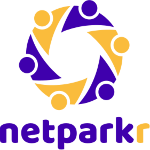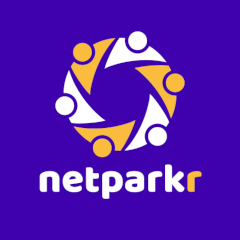Andy Cloke created his successful SaaS startup, Data Fetcher, to easily import and export data on the popular low-code collaborative app-builder Airtable. After two years of operation, Data Fetcher earns over $130,000 in ARR and Andy plans to hit $150,000 by the end of 2022. Andy had already sold his first business, Influence Grid, for $55,000, and stumbled across a Google Sheets add-on called API Connector on Product Hunt, which did what he wanted to do on Airtable.
Andy Cloke designed his SaaS, Data Fetcher, to facilitate the import and export of data on Airtable, the most popular low-code collaborative app builder. His current venture concept required an external API, and since he could not locate an extension, he created one himself.
He crafted his extension just as Airtable’s storefront opened in the middle of 2020. In a new market with little competition, Andy’s utility was typically the first (and frequently the only) result whenever the keyword “API” was entered into the extensions search bar. Instantaneously, organic, paying customers filtered in. Then, paying close attention to the customer experience, customers began to stream in.
Andy anticipates that Data Fetcher’s annual recurring revenue will reach $150,000 by the end of 2022, after just two years of operation. Here’s how he struck upon what may be the ideal lifestyle business by replicating an idea and implementing it in Airtable.
An Acquisition Only Three Years After College
Before Andy began to consider Data Fetcher, he had already sold his first business. Influence Grid was a SaaS directory of TikTok influencers that was acquired in early 2020 for a modest sum of $55,000.
For a recent college graduate, $55,000 was sufficient capital for a new venture. Following Tyler Tringas’ “Meat Grinder” methodology, Andy created a landing page for a new company every week. The plan was to reject sufficient subpar concepts until one worthy of pursuit emerged.
Data Fetcher originated from one of these failed business concepts. Andy attempted to compose a newsletter listing recent IPOs for retail investors, using Airtable to manage newsletter content. “Airtable is basically Google Sheets on steroids,” he explains. “People love it.”
Andy became frustrated, however, when he was unable to readily integrate financial data such as stock prices. “It is difficult to import or export data with Airtable. I scoured the forums and discovered a few posts from users attempting to connect to third-party APIs, particularly those not supported by Zapier. This was sufficient evidence for me to believe there was something there.”
Several weeks later, Andy discovered an API Connector Google Sheets extension on Product Hunt. It accomplished on Google Sheets what he desired on Airtable.
Andy was an accomplished programmer and believed he could create a comparable add-on for Airtable, but at the time the system lacked a place for independent developers to distribute them. However, he noticed signs that Airtable will soon offer an extension shop when he checked forum threads once again.
“I deliberately searched for a new, uncontested platform.”
Any skilled bootstrapper is aware of the benefit of entering a new market first. He explains, “I was purposefully looking for a new, low-competition platform.” “I built something that existing for Instagram but for TikTok with my prior SaaS company. This model, in my opinion, is excellent for low-competition company concepts. I took a chance and began creating an API Connector-style extension for Airtable.
The risk paid off. After a few months of back and forth on security, Airtable opened its store, and in November 2020, Data Fetcher became one of its first apps.
The Benefits of Being the First Player in a Brand-New Market
Andy also made use of his motivation to forge an important relationship. Andy gave credit for the concept on Product Hunt shortly after the debut of Data Fetcher to the founder of API Connector, who is headquartered in Hong Kong. They have since established a productive working partnership and have been implementing each other’s ideas on their respective platforms.
It’s Pleasant Being First Data Customers could sign up, add their API information, and conduct API calls manually or automatically if they upgraded in Fetcher’s MVP. He believed that this demonstrated the product-market fit.
Data Fetcher’s organic marketing benefited greatly by being the first player in a brand-new market. He could maintain the top spot in the Airtable marketplace search results with little effort, as opposed to fighting against marketing teams spending millions of dollars on the very competitive Google Search rankings.
I operate in a market with little competition, adds Andy. “I will appear when most clients search for API or import. It’s similar to marketing on automatic. Since no VC-backed firm is competing with it, it’s not like attempting to introduce a new CRM.
But Andy was wise enough to avoid taking advantage of his momentary first-mover advantage. He instantly started writing in communities on Facebook and Reddit about his extension. “All those things brought in ten to twenty free users, which proved this was something people would pay for,” he claims.
“By far, the best channel has been YouTube. Although there weren’t many views, the motivation for those views was really strong.
Turning YouTube Views into Paying Customers
After some basic verification, Andy started a YouTube and blog-based SEO effort. “Today I probably get twenty to thirty percent of my traffic from those channels,” he claims. “By far, the best channel has been YouTube. Although there weren’t many views of the content, the motivation for those views was very strong. One of the eight people that watched my Google Maps API video and become a client. Even though it only had a thousand views at one time, my most successful video brought in more than thirty clients.
Andy experimented with the sign-up process to properly credit his material. He would provide separate sign-up codes for his blogs and YouTube videos. He was able to see much more clearly which channels were converting and which were not as a result.
Although there was little competition and individuals were ready to sign up for a free version, Andy claims it was difficult to turn them into paying customers and maintain them. During his first several months of operation, he struggled to maintain a constant MRR.
“I chose a freemium model and looked to the Shopify app store for inspiration, a strategy I still employ today.”
“Even though my pricing point is relatively low, I was only picking up one or two new clients a week. My value-based statistic of choice was the monthly number of API runs. I chose a freemium business model after getting ideas from the Shopify app store, a strategy I still employ today. Since most individuals only want to migrate their data once, there was a surprising bit of churn even though I was expanding slowly. I panicked because I thought there was no way this could work.
Andy was fortunate to network with seasoned founders who helped him out when times were rough.
Andy adds, “A friend advised me to practice greater patience and concentrate on marketing. He said that if I could get 50 clients, I could find 100.
Andy discovered he didn’t completely get how Data Fetcher’s users interacted with it. As a developer, he was able to see things that new clients would not have. He started adding more customer service points and enabling clients schedule personal support sessions so he could observe how they used the technology in real time.
“I discovered this past year how crucial user testing is. It’s astonishing how much you overlook while testing something. One client informed me that my landing page was so difficult to understand that he had tried every other tool before mine. Immediately after that, I redo my landing page.
Early in 2022, after nearly a year of consistent growth marketing, Data Fetcher’s MRR started to nudge upward. Beginning in January, it made $5,000 each month, and by August, it was making $10,000. For a one-man crew, not bad.
Balancing Growth and Burnout
Andy is open to taking Data Fetcher in a variety of directions. He is concerned that his rapid growth may cause him to burn out. For him, the lifestyle is more important than having a lot of money.
Andy claims, “I wanted to make my ideal job.” While keeping this small, I still want to concentrate on product and design-related projects. Although I’m unsure if it can reach a multimillion dollar business in this manner, I’ll keep looking into it to find out.
While being a part of the Airtable shop has been one of the marketing strategies that has helped Data Fetcher the most, Andy is concerned that it might also be the company’s demise. “It’s unsettling to consider what may occur if Airtable included my functionality in their app. I intend to fully utilize this platform and then broaden my revenue streams. I might roll out other SaaS applications.
Andy is eager to accomplish what he loves, no matter which direction the wind is blowing.
“I worked on side projects for years that never brought in any money until my acquired skills finally paid off.”
“I’ve always wanted to be an entrepreneur, but this is the first time it’s worked,” he claims. “I worked on side projects for years that never brought in any money until my acquired skills finally paid off.”
There may not be a single recipe for success in business, but there are many excellent rules that entrepreneurs should go by. With a flexible mentality and a critical eye, any of your ideas can eventually result in a breakthrough, as Andy’s experience demonstrates. Instead of modifying your product when you can’t discover product-market fit, you may try narrowing your market.
Go and check Andy’s sites:
We gather unique business case studies from all over the internet, to inspire you with a wide range of business ideas. This case study was supervised by our team and it definitely caught our interest. You can find other inspiring business stories here.







